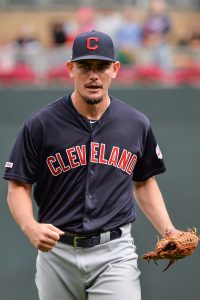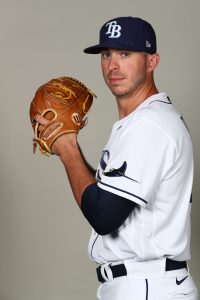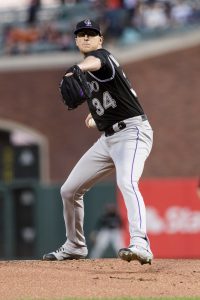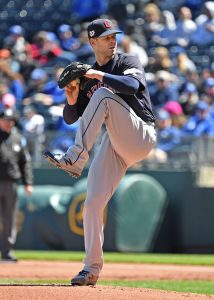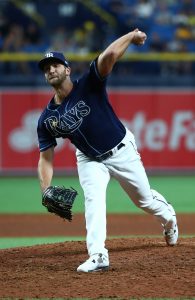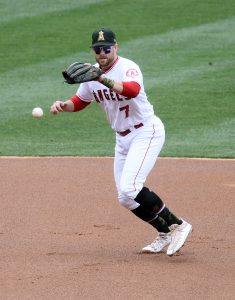Here’s a fun exercise during a time without much real baseball: Imagine you’re an expansion general manager who can take one player from 26 of the game’s 30 rosters to build a full major league team. You can’t steal any prospects, though, so someone like Wander Franco’s off limits, and there are going to be occasions where you’ll have to draft for need instead of talent. That might mean passing on someone’s superstar for a comparatively nondescript player at a different position. For the most part, you also have to take affordability and team control into account. Here’s what I came up with…
National League East:
- Braves – Ronald Acuna Jr., outfielder: A 22-year-old superstar who’s signed to a team-friendly contract through at least 2026 (and possibly ’28 depending on club options)? Don’t mind if I do.
- Nationals – Juan Soto, outfielder: I’ve quickly filled my starting corner outfield with Acuna and Soto, 21. The spectacular Soto brings five years of team control to the table.
- Mets – Jacob deGrom, starting pitcher: He’s on the wrong side of 30 (he’ll be 32 in June) and owed $120.5MM through 2023, but I’m OK with spending big on a back-to-back National League Cy Young winner. I’ve got my ace.
- Phillies – Aaron Nola, starting pitcher: Nola will probably be a back-end starter on this team, which is not a knock on him. The soon-to-be 27-year-old’s a proven righty who will make roughly a guaranteed $35MM through 2022. That’s not much relative to his value, and Nola’s also controllable in 2023 by way of what currently looks like a reasonable $16MM club option.
- Marlins – Brian Anderson, third baseman/outfielder: He’s overqualified for a bench spot, but that’s a role Anderson will fill on this roster. He’ll be in the mix for four years, including one more pre-arbitration season.
National League West:
- Dodgers – Walker Buehler, starting pitcher: There are certainly multiple appealing options in LA, but I’ll take the budding ace in Buehler, who’s 25 and won’t become a free agent until after 2024.
- Diamondbacks – Ketel Marte, middle infield/outfield: This is an easy pick, as the versatile 26-year-old is fresh off a near-MVP season and will continue to play on a bargain contract for a few more seasons. He’ll make a combined $14MM over the next two years, and comes with a pair of affordable club options totaling $22MM.
- Giants – Pass.
- Rockies – Scott Oberg, reliever: Kind of a strange pick when the likes of Nolan Arenado, Trevor Story, Jon Gray and German Marquez are on the roster, but I’m picking for need here and trying to keep the budget down. Oberg, 30, put up his second straight terrific season in 2019, and having inked a three-year, $13MM deal in December, the hope is that he’ll continue to provide plenty of surplus value.
- Padres – Emilio Pagan, reliever: Passing on Fernando Tatis Jr. looks insane, but I feel OK about finding a high-end young shortstop later. This is another need filled at a low price – Pagan, 29, is quietly excellent and under control through 2023.
National League Central:
- Cardinals – Jack Flaherty, starting pitcher: Sign me up for a front-end rotation piece who’s 24 and won’t be eligible to hit free agency until after 2023.
- Brewers – Josh Hader, reliever: Christian Yelich is the best player on the Brewers and maybe the best player in the NL. However, I already have my corner outfield set with Acuna and Soto, and I have a certain someone in mind for center. That leaves me with the two-time reigning NL Reliever of the Year in Hader, another star who’s not slated to visit the open market until after 2023.
- Cubs – Willson Contreras, catcher: I’ve got my starting backstop, a big-hitting, cannon-armed 27-year-old with three seasons’ control left. That sounds good. I’ll have that.
- Reds – Pass. Many talented players on the Reds, but no one who fits on this particular roster.
- Pirates – Bryan Reynolds, outfielder: Like the aforementioned Brian Anderson, Reynolds is ridiculously overqualified for a bench role, but he’ll nonetheless be a sub on this club.
American League East:
- Yankees – Gleyber Torres, shortstop: A Marte-Torres middle infield sounds pretty appealing. Torres is still just 23, and he won’t become a free agent until the conclusion of the 2024 campaign.
- Rays – Nick Anderson, reliever: He’s not the best or most valuable player on the Rays by a long shot, but the 29-year-old Anderson’s yet another major threat out of the bullpen – one who fits this team. MLBTR’s TC Zencka recently wrote about Anderson’s ascent.
- Red Sox – Rafael Devers, third baseman: The infield’s almost full now. Devers is a 23-year-old who nearly put up 6.0 fWAR in 2019 and still has four seasons of control remaining.
- Blue Jays – Ken Giles, reliever: It would be easy to grab Vladimir Guerrero Jr. or Bo Bichette here, but I don’t have starting spots for either one. Ergo, with relief help still a need, I’m taking the one-year rental in Giles.
- Orioles – Pass.
American League West:
- Astros – Yordan Alvarez, outfielder/first baseman: I’m picking the reigning AL Rookie of the Year, 22, as my designated hitter.
- Athletics – Matt Olson, first baseman: The infield’s now complete. The 26-year-old Olson’s a power-hitting defensive standout who can’t be a free agent until after 2023.
- Rangers – Jose Leclerc, reliever: This is another selection that puts need and affordability at the forefront. The flamethrowing Leclerc has four guaranteed seasons and less than $20MM on his deal, not to mention a $6.25MM club option for 2024.
- Angels – Mike Trout, outfielder: Who else but a living legend? And who wouldn’t sign up for an outfield of Acuna and Soto flanking Trout?
- Mariners – Tom Murphy, catcher: Contreras’ backup, and as MLBTR’s Anthony Franco wrote last month, someone who was really effective last season.
American League Central:
- Twins – Taylor Rogers, reliever: This is another example of addressing a need over choosing a team’s top player, but that’s not to say Rogers is a slouch. The 29-year-old lefty has kept runs off the board with aplomb throughout his career and still has three years of control left.
- Indians – Shane Bieber, starting pitcher: This soon-to-be 25-year-old workhorse comes with a half-decade of control.
- White Sox – Aaron Bummer, reliever: In a vacuum, this is a bad pick. After all, the White Sox have the likes of Yoan Moncada, Yasmani Grandal, Eloy Jimenez, Luis Robert and Lucas Giolito on their roster. Again, though, this is an example of mixing need with long-term affordability. Bummer, 26, was lights-out last season, and he signed a club-friendly extension after that.
- Royals – Whit Merrifield, second baseman/outfielder: The All-Star will be coming off the bench, which is a testament to how good this roster is.
- Tigers – Pass.
There you have it. Here’s an overview of the roster …
Starting Lineup:
- Catcher – Willson Contreras
- First baseman – Matt Olson
- Second baseman – Ketel Marte
- Shortstop – Gleyber Torres
- Third baseman – Rafael Devers
- Center field – Mike Trout
- Right field – Ronald Acuna Jr.
- Left field – Juan Soto
- Designated hitter – Yordan Alvarez
Bench:
- Brian Anderson, Bryan Reynolds, Tom Murphy, Whit Merrifield
Rotation:
- Jacob deGrom, Aaron Nola, Walker Buehler, Jack Flaherty, Shane Bieber
Bullpen:
- Scott Oberg, Emilio Pagan, Josh Hader, Nick Anderson, Ken Giles, Jose Leclerc, Taylor Rogers, Aaron Bummer
—
Based on the criteria I followed, that’s my 26-man team. It was enjoyable and challenging to construct. Feel free to put together your own roster.

